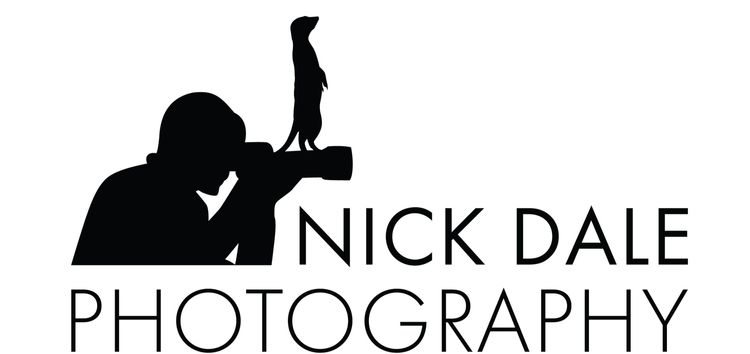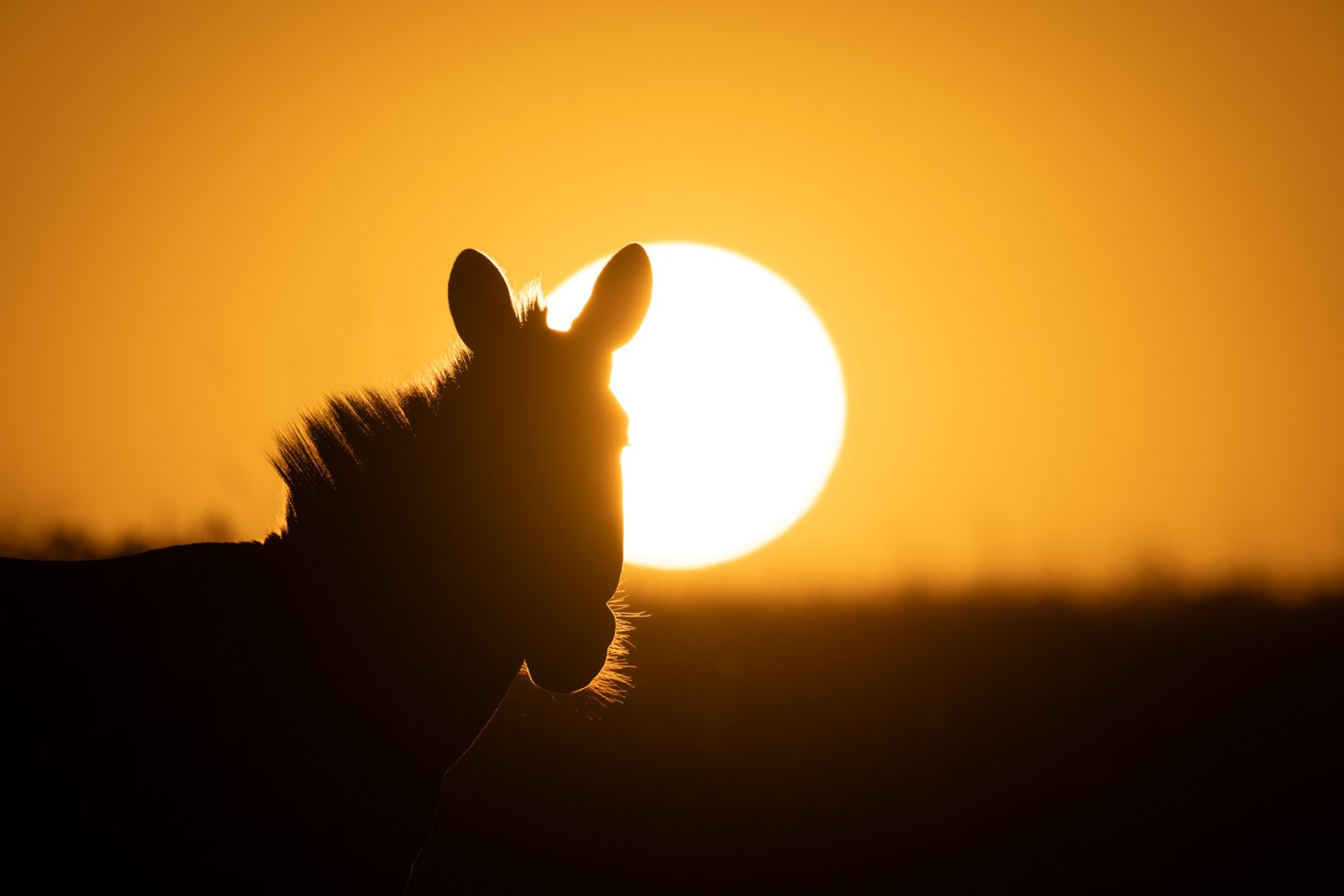“Come on! One at a time, one at a time…!”
Confusion of blue wildebeest galloping through dust
As a wildlife photographer, I find crowd scenes very difficult. I’ve just looked through my Top 100 shots of all time, and only one of them had more than four subjects!
Is it just me? Well, there are several problems with taking pictures of groups of animals or birds:
Lack of a single focal point. If there are many subjects in the frame, which one are you supposed to look at? If there’s no main subject, then it’s easy for nothing to seem important.
Depth of field. How many of the animals or birds are supposed to be sharp? Those at the front, those in the middle, those at the back or all of them?
Background. If you fill the frame with a crowd of animals or birds, there’s no room for anything else. You can’t use negative space, for instance, or get a minimalist feel from silhouettes on the horizon at sunset.
Direction of gaze. If you have a small group of animals, it’s hard to get them all to look in the right direction. You have to be very patient—or just give up and choose a larger group, so it doesn’t matter as much.
Asymmetry. It can be fun to take pictures of animals adopting exactly the same pose, and it’s easy with two or three zebras or giraffes. However, with bigger groups, you’ve got no chance!
Rule of thirds. This is one of the most famous rules of composition, but it’s impossible to put it into practice if you’re shooting 10,000 wildebeest crossing a river! There are just too many of them.
Overlap or lack of separation. This is key to a good photograph. You don’t want animals or other objects overlapping your main subject—but it’s just about impossible to avoid if you’re photographing a herd of wildebeest or zebras.
Cropping. If you fill the frame with a herd of animals, it’s almost impossible to avoid cropping an animal or two on each side of the picture. There just aren’t enough gaps between them to be able to isolate a single line or group.
I could go on, but I hope you get the point…
So what’s the solution? Having just spent a couple of weeks photographing the Mara river crossing in northern Tanzania, I’ve tried to put together a few techniques that might help you cope better with crowds.
Differential Focus
Blue wildebeest stands watching camera near another
Some rules of composition can be used with groups of animals as well as individual subjects. You just have to treat the others as the ‘background’—just as you would trees or other natural features.
This image only has one wildebeest in the background, but it can work with any number as long as you use differential focus (or other tools) to separate your subject.
Slow Shutter Speeds
Another way of separating individual animals from the herd is to use a slow shutter speed with both static and moving subjects. The static one(s) will be sharp, but the moving ones will be blurred, which means they’ll be less distracting to the eye.
Paul Goldstein once took a very good slow pan shot of a herd of wildebeest crossing a river. Most of the animals were blurred, but one was standing still on a rocky outcrop, and that was crucial to the success of the image.
I took this one (see above) at 1/5 of a second as a kind of hommage to Paul…!
Show Dust and Spray
Confusion of blue wildebeest hidden by dust
Another way to spice up your crowd scenes is to focus on dust or spray. These were both in ready supply in Tanzania, and it’s not hard to make them the subject of your shots rather than the animals.
Paul Goldstein (again!) often says that dust, air and spume are the Holy Trinity of wildlife photography, and I tend to agree. This shot of a herd of blue wildebeest hidden in a dust cloud makes me think of the Seventh Circle of Hell in Dante’s Inferno…!
Make the Group the Subject
Confusion of blue wildebeest galloping through water
Sometimes, NOT having a central focus in your photo can be the whole point. One of the joys of photographing the river crossings is the sheer scale of the numbers. If you want to show that in your pictures, you just need to zoom in on the herd itself and fill the frame. It helps if all the animals are pointing in the same direction, but that’s not always necessary—or possible!
Isolate an Individual
Blue wildebeest stands turning head under stormclouds
Even in a herd of animals, it’s usually still possible to isolate an individual. I know that might sound like a cop-out, but it’s all part of biding your time and taking the shot YOU want to take, not the easy one that’s often very tempting.
In the case of the Great Migration, there are so many blue wildebeest, plains zebras and other antelopes stretched over such a large area that it’s quite easy to photograph individual animals if you’re prepared to bide your time.
Sunrise and sunset are good times to do this, especially if you can find a single animal on the horizon. The blue wildebeest in this shot (see above) just looked round towards me at sunset with the stormclouds gathering in the distance, and I liked the contrast between the bright yellow grass and the deep blue of the sky.
Switch to a Different Animal
Even if you’re surrounded by a herd of wildebeest or a flock of birds, you can always photograph elephants, the big cats or birds instead. On my recent trip to the Serengeti, I can hardly remember a single moment when there weren’t any wildebeest in sight, but I still managed to take pictures of other species.
We got into a daily routine that usually involved taking silhouette shots at sunrise, then looking for a river crossing and then hunting for lions, leopards or cheetahs in the afternoon. It worked out pretty well, and most of my favourite shots didn’t show wildebeest at all (see above)!
Photograph Birds
Blue Bird
Many people ask me if I photograph birds, and I always give them the same answer: “Yes—if there aren’t any animals around!”
Some people might disagree with my priorities (especially birders!), but I don’t dispute the value of bird photography. If all you can see is a confusion of wildebeest sweeping over the savannah, the best option is sometimes just to look around and try to spot a bird in the trees.
I’m a big fan of the African fish eagle, the lilac-breasted roller and the little bee-eater, and I’ve spent a lot of time photographing all three of them in Botswana, Kenya and Tanzania. They also tend to be rather solitary, so you’re in less danger of being faced by a whole flock of them!
My usual approach is to spot a bird on a dead tree and drive to within 15-20 yards of it. I can then frame the bird with my 400mm or 600mm lens, giving it a little bit of room for it to fly into.
I have a pair of Sony ⍺1 cameras with bird eye detection and three custom presets on the main dial, so I take advantage of both of those features.
Using auto ISO, I set my shutter speed to 1/3200 of a second and my aperture to the maximum value and wait for the bird to take off.
(This works for lilac-breasted rollers and African fish eagles, but little bee-eaters disappear so quickly that I have to keep on taking little mini-bursts every half a second or so.)
When the bird takes off, I press the shutter release as quickly as I can and take a burst of shots before it leaves the frame. I can then choose the best one and edit it in post—which is what I did for Blue Bird (see above).
Take Silhouettes
Panorama of blue wildebeest silhouetted at sunset
One of the virtues of taking silhouette shots on the horizon at sunrise or sunset is that the individuality of the animal is less important. The whole thing is in deep shadow, after all, so the point of the shot is the dramatic contrast between the silhouette and the colourful sky and/or the rising or setting sun.
I look for animals with a distinctive shape so that the silhouettes are easily recognisable, so it works best with elephants, giraffes and horned animals. I also prefer to take pictures of individual animals, but it can also work with a small group.
Every photograph can be broken down into the subject, the background and the light, but the subject is probably the least important in these kinds of images. That means the usual rules regarding separation don’t apply, and you can get away with a group shot like the one above.
Verdict
If you’re anything like me, then crowd scenes can pose a problem in wildlife photography. They are hard to capture with a ‘normal’ approach, so you have to think outside the box.
In my case, I knew what the issues were going to be, so I forced myself to come up with a shot list before my Tanzania trip. I was lucky enough to be able to tick everything off, but it did require a fair bit of experimentation!
If you’d like to order a framed print of one of my wildlife photographs, please visit the Prints page.
If you’d like to book a lesson or order an online photography course, please visit my Lessons and Courses pages.



